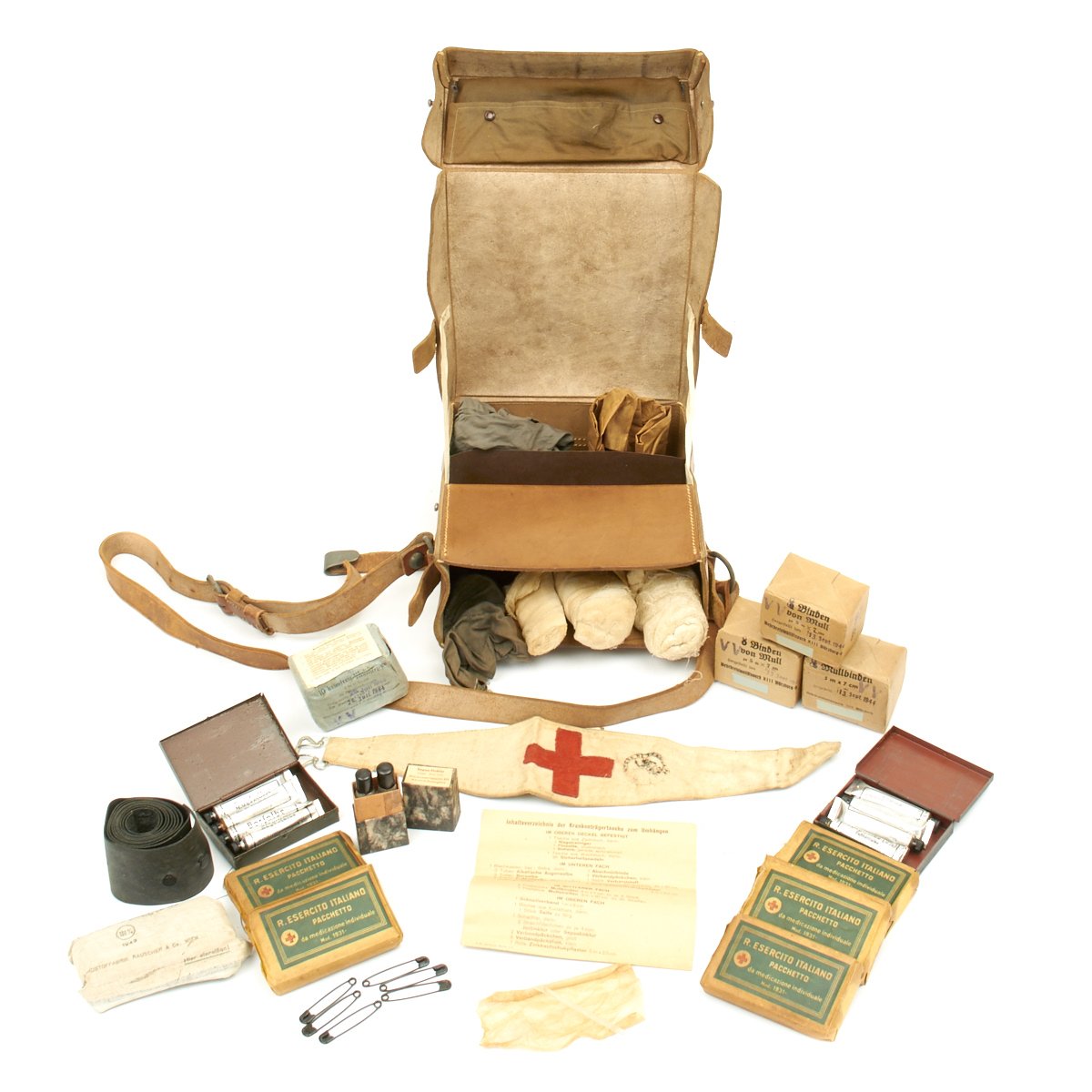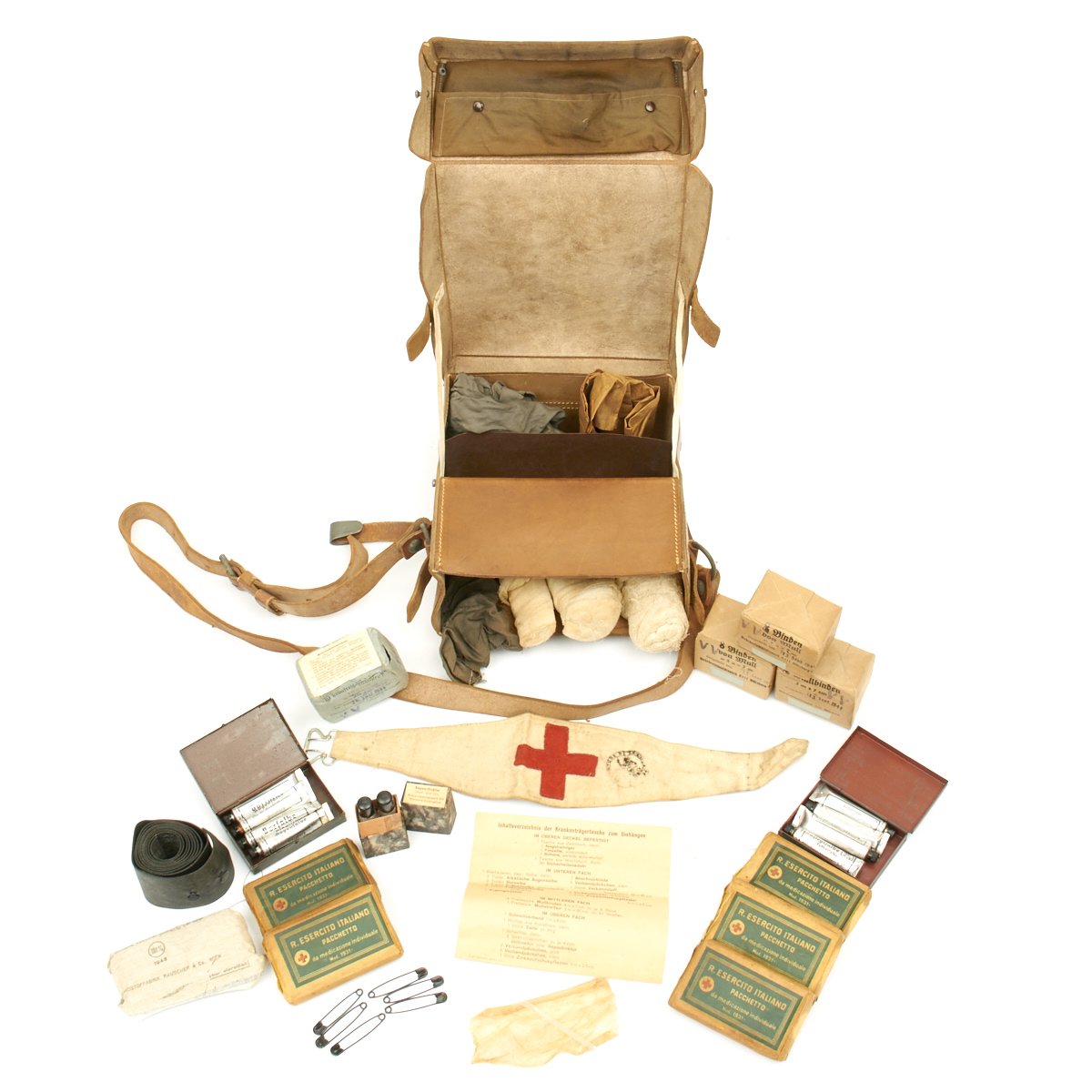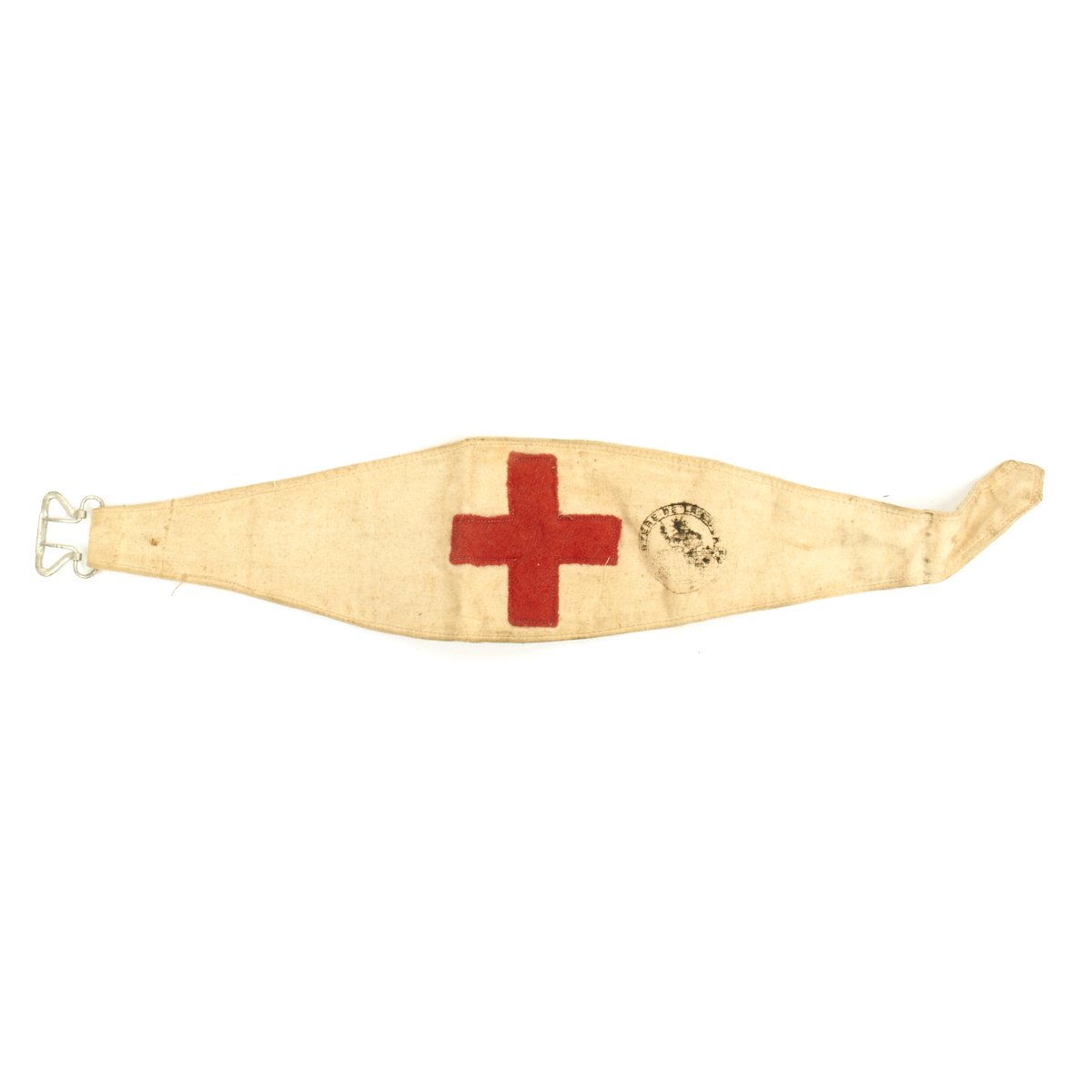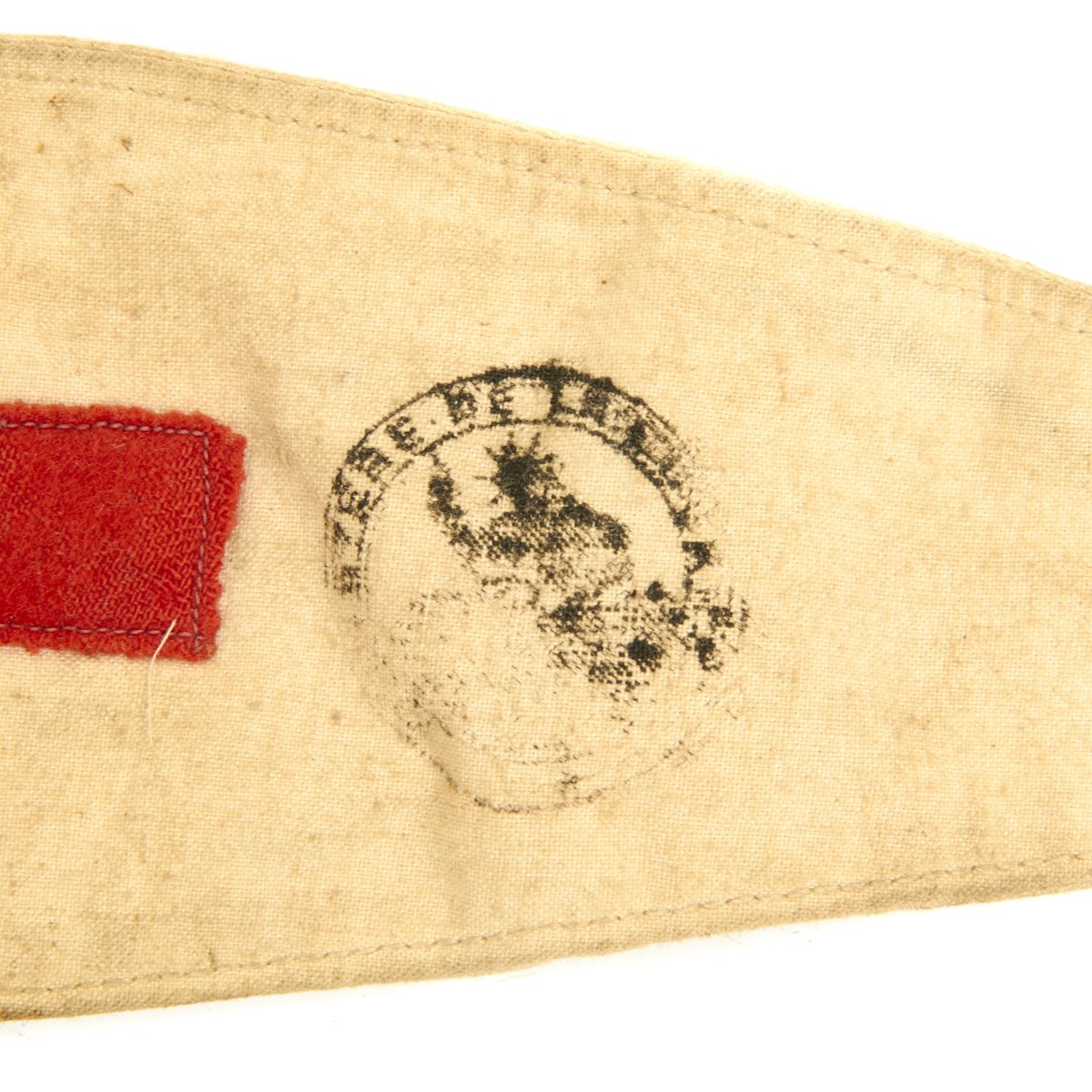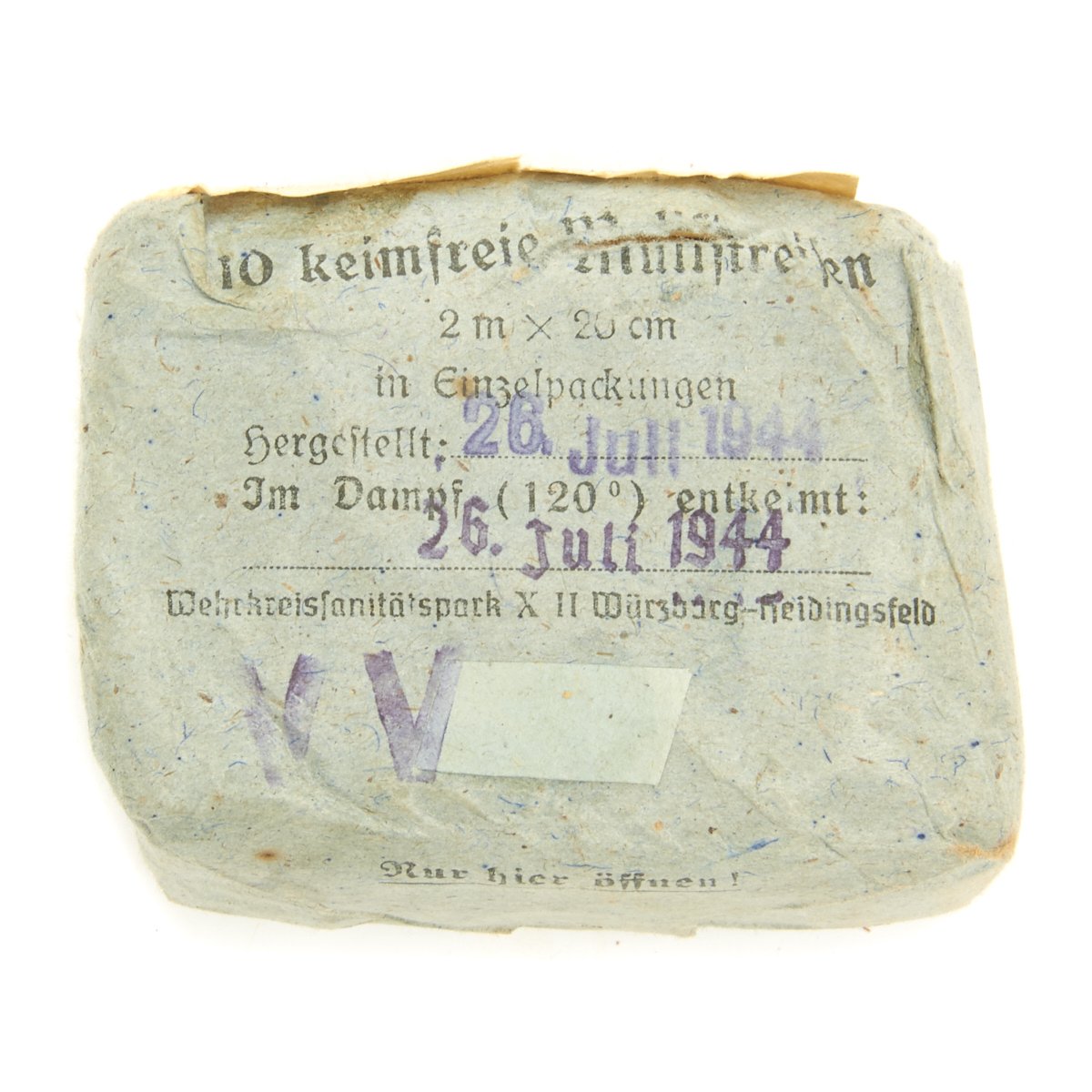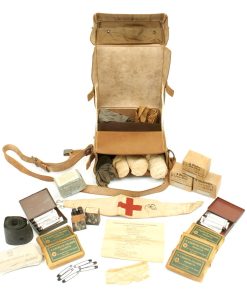Original German WWII Field Medic First Aid Set in Leather Medic Bag Original Items
$ 695,00 $ 208,50
Original Item: Only One Available. This fantastic full set of first aid equipment nearly all bearing WW2 dates and contained in a classic excellent condition brown leather German WWII issue first aid leather large pattern medic case. The case features a carry handle on top, multiple compartments inside and an embossed K to the front. Included in the set are the following pieces-
– German WWII Medic red cross arm band, named on the interior to a U.S. soldier (bring back).
– Printed brown paper inventory list (in German) marked at the bottom edge P.W. Herrfurth, Berlin.
– Leather tourniquet belt.
– Three 5m x 7m Mullbinden in original brown paper packaging with paper labels and ink stamps each dated 13 September 1944.
– 10 Keimfreie Mullstreifen (10 germ-free gauze strips) in original blue paper packaging with paper labels and ink stamps dated 26 July 1944.
– Wehrmacht Verbandpäckchen in fabric packaging dated 1943 manufactured by Verbandstoffabrik Rauscher & Co., Wien
– Gray fabric used for bandages
– Waterproof waxed fabric
– Multiple Black Safety pins.
– Five unopened excellent condition Italian Army WWII first aid pack which were very popular with the Wehrmacht in period of 1943-1945. Stamped Pacchetto da medicazione individuale Mod. 1931 (Italian: individual first aid pack, model 1931). Marked R. Esercito Italiano. R. Esercito represents Regio Esercito; the Italian Royal Army, and that name was used only till 1943. Meaning these are absolutely pre-1943 manufacture.
– Salben Tin with four aluminum SALICYSALBE salve tubes with bakelite caps that even have small pieces of cork under the cap. Original salve is still inside. Marked in black lettering Wehrkreissanitätspark XVIII Würzburg. (18th district medical park, Würzburg).
– Salben Tin with four aluminum salve tubes with bakelite caps that even have small pieces of cork under the cap. Original salve is still inside. Two tubes are marked BORSALBE and two are marked ALKASALBE. Each is marked in black lettering Wehrkreissanitätspark XVIII Würzburg. (18th district medical park, Würzburg).
– Original box with paper label with two glass vials inside of SEPSO-TINKTUR (one broken) one still full of liquid! In 1927, Sepso was introduced by the Lingner-Werke, Dresden for external disinfection, initially under the name Metajodin (meaning iodine replica), from 1935 then as Sepso.
– Various gauze wraps and more!
This is an extremely rare and highly collectible set with a wonderful history offered in excellent unissued condition.
Fast Shipping with Professional Packaging
Thanks to our longstanding association with UPS FedEx DHL, and other major international carriers, we are able to provide a range of shipping options. Our warehouse staff is expertly trained and will wrap your products according to our exact and precise specifications. Prior to shipping, your goods will be thoroughly examined and securely secured. We ship to thousands clients each day across multiple countries. This shows how we're dedicated to be the largest retailer on the internet. Warehouses and distribution centres can be located throughout Europe as well as the USA.
Note: Orders with more than one item will be assigned a processing date depending on the item.
Before shipping before shipping, we'll conduct a thorough inspection of the items you have ordered. Today, the majority of orders will be delivered within 48 hours. The delivery time will be between 3-7 days.
Returns
The stock is dynamic and we cannot completely manage it because multiple stakeholders are involved, including our factory and warehouse. So the actual stock may alter at any time. It's possible that you may not receive your order once the order has been made.
Our policy is valid for a period of 30 days. If you don't receive the product within 30 days, we are not able to issue a refund or an exchange.
You can only return an item if it is unused and in the same state as the day you received it. You must have the item in its original packaging.
Related products
Uncategorized
Australian WWII Owen MK1 Machine Carbine SMG Custom Fabricated Replica with Sling Original Items
Uncategorized
Uncategorized
Uncategorized
Uncategorized
Uncategorized
Uncategorized
Uncategorized
Armored Burgonet Helmet & Polearm from Scottish Castle Leith Hall Circa 1700 Original Items
Uncategorized
Uncategorized
Uncategorized
Uncategorized
Uncategorized
Uncategorized
Angolan Rebel 1970s era 60mm Inert Display Mortar from Angolan Civil War Original Items
Uncategorized
Uncategorized
Uncategorized
Uncategorized
Band of Brothers ORIGINAL GERMAN WWII Le. F.H. 18 10.5cm ARTILLERY PIECE Original Items
